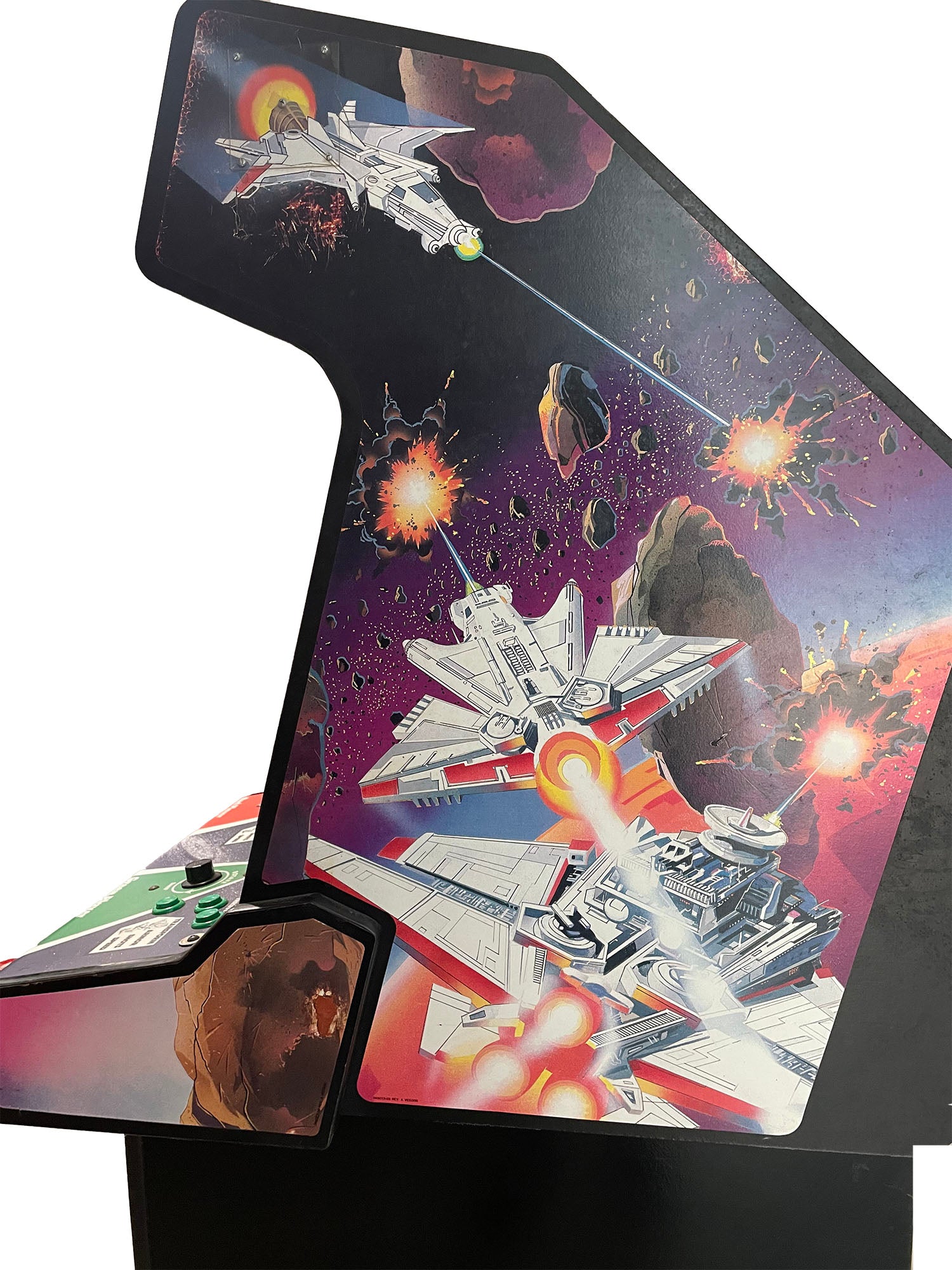Introduction
Blasteroids is the 1987 follow-up to Atari’s revolutionary Asteroids, bringing enhanced graphics, gameplay mechanics, and a fresh twist to the arcade classic. With new elements like power-ups, cooperative play, and a dynamic playfield, Blasteroids captured the attention of arcade enthusiasts and showcased the evolving technology of the late 1980s. Here, we explore the history, gameplay mechanics, and legacy of Blasteroids and why it holds a special place in the world of arcade games.
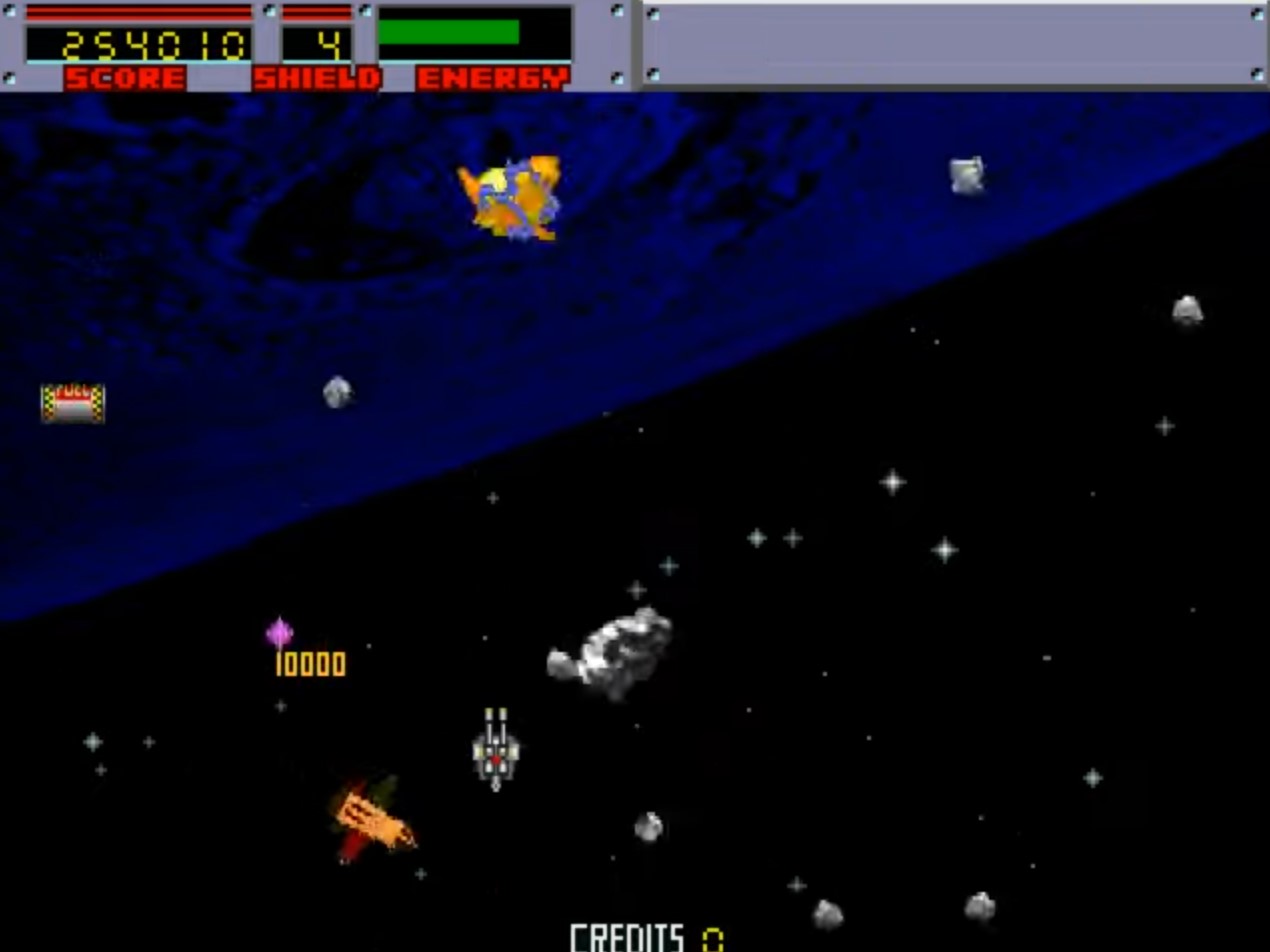
The History of Blasteroids
Blasteroids was developed and released by Atari in 1987, nearly a decade after the original Asteroids took arcades by storm. By the late 1980s, arcade technology had advanced significantly, enabling more detailed graphics and enhanced gameplay. Atari took advantage of these developments to breathe new life into the original concept with Blasteroids.
Key Facts:
- Release Year: 1987
- Developer: Atari, Inc.
- Platform: Arcade cabinets featuring more sophisticated graphics and sound than its predecessor
Impact on the Industry: Blasteroids represented a shift from simple vector graphics to more colorful, detailed raster graphics. This transition marked Atari’s ability to adapt to a more competitive arcade market while retaining the essence of what made Asteroids a hit.
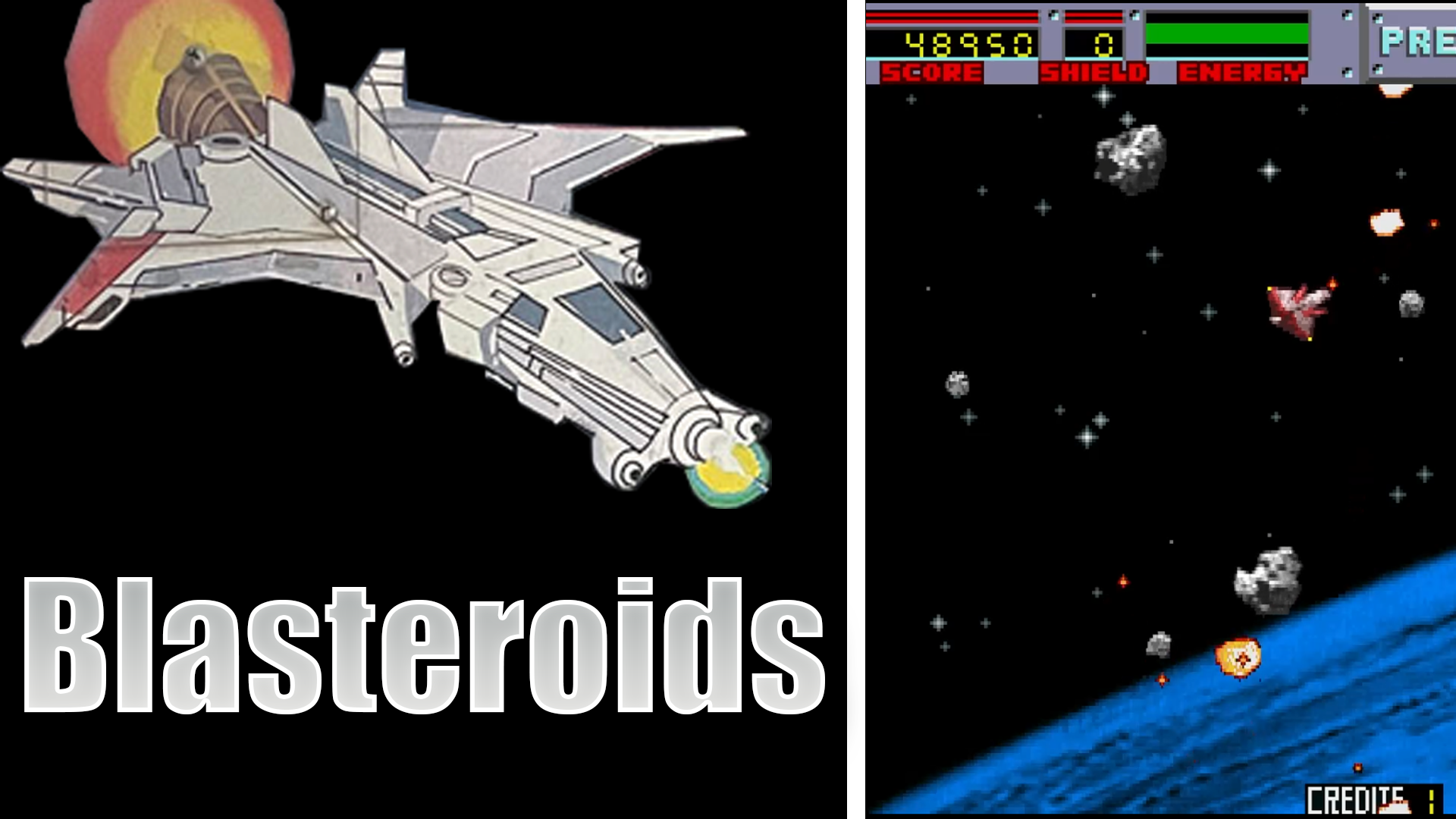
Blasteroids Gameplay Video
Gameplay and Objectives
In Blasteroids, players control a ship called the Warpship as they navigate space, destroying asteroids and battling enemies. The gameplay expanded on the original’s foundation, introducing a range of new features that increased complexity and player engagement.
Gameplay Features:
- Transformable Ship: Players could switch between three ship forms: the fast but weak Speedster, the strong but slow Basher, and the balanced Fighter. This feature added strategic depth, allowing players to adapt to different situations.
- Power-Ups: New to the sequel, players could collect power-ups to enhance their firepower, shields, and fuel.
- Cooperative Play: The two-player mode allowed for cooperative gameplay, making Blasteroids a more social experience and adding teamwork strategies.
- End-of-Level Bosses: Players faced off against the sinister alien Mukor, who challenged them at the end of each sector.
Tip for Players: Master the ability to switch between the different Warpship forms to tackle obstacles and enemies more effectively.
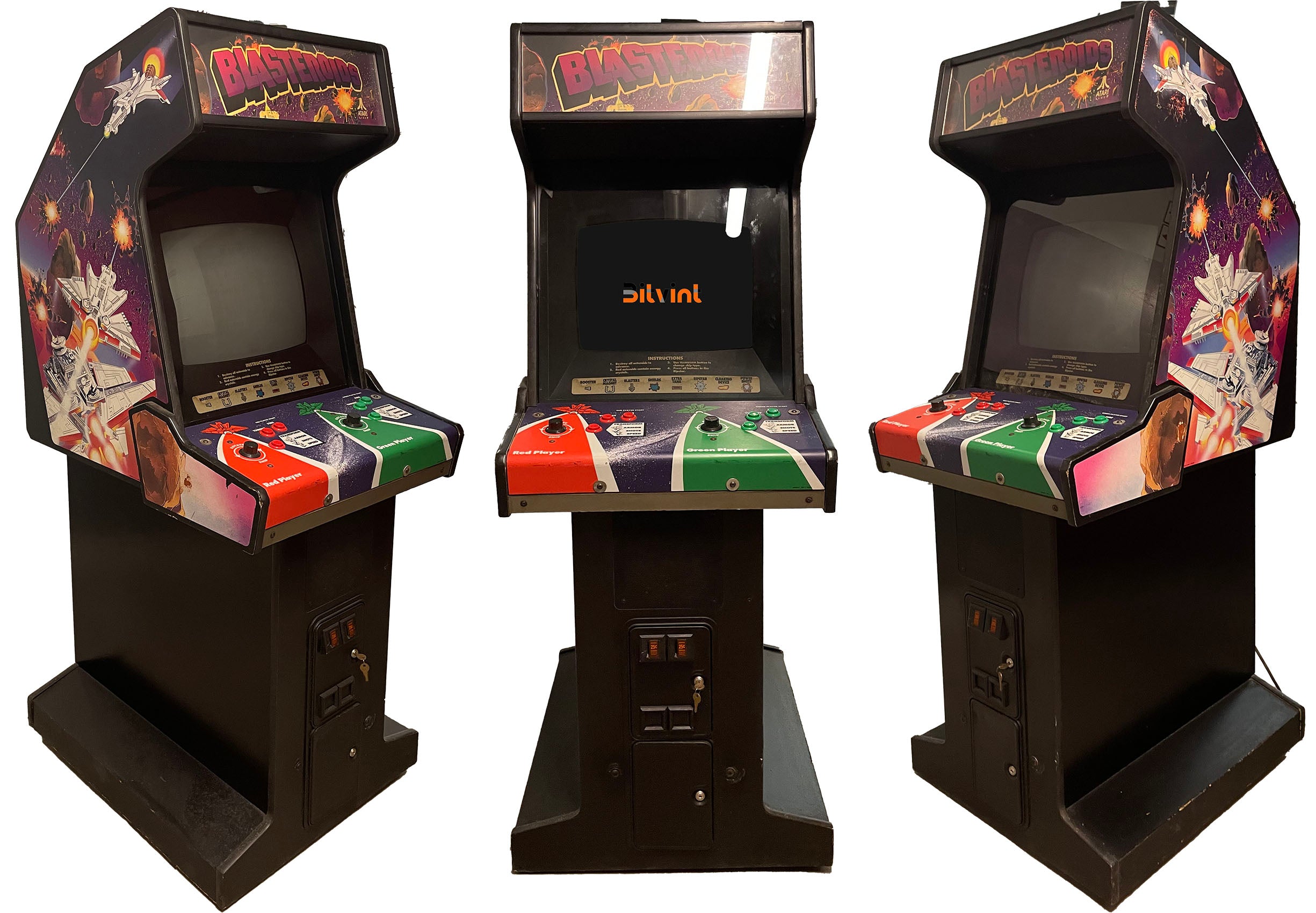
Unique Features and Innovations
Blasteroids distinguished itself with innovations that set it apart from its predecessor and other arcade games of the time.
Key Innovations:
- Graphics Upgrade: Unlike the vector-based graphics of Asteroids, Blasteroids utilized raster graphics, which provided more detail and color.
- Split-Screen Co-Op: The cooperative mode allowed two players to team up, splitting gameplay tasks like asteroid destruction and enemy engagement.
- Energy Management: Players had to manage their ship’s fuel, which added an element of strategy. Fuel could be replenished by collecting specific power-ups or docking at fuel stations.

Blasteroids - Level Design
"Blasteroids" doesn't have traditional levels like many other arcade games. Instead, it features a continuous gameplay loop where players navigate through asteroid fields, battling enemies and collecting power-ups. The game increases in difficulty over time, introducing more challenging obstacles and enemies. This design allows players to engage in a non-stop arcade experience without distinct level divisions.
Strategies for High Scores
- Switch Ship Forms Strategically: Use the Speedster form for dodging and quick maneuvers, the Basher for heavy-hitting asteroid destruction, and the Fighter for balanced engagements.
- Collect Power-Ups: Prioritize collecting power-ups for enhanced weapons and shields to survive longer and score higher.
- Work as a Team: In two-player mode, coordinate with your partner to cover different sections of the screen and protect each other from enemy fire.
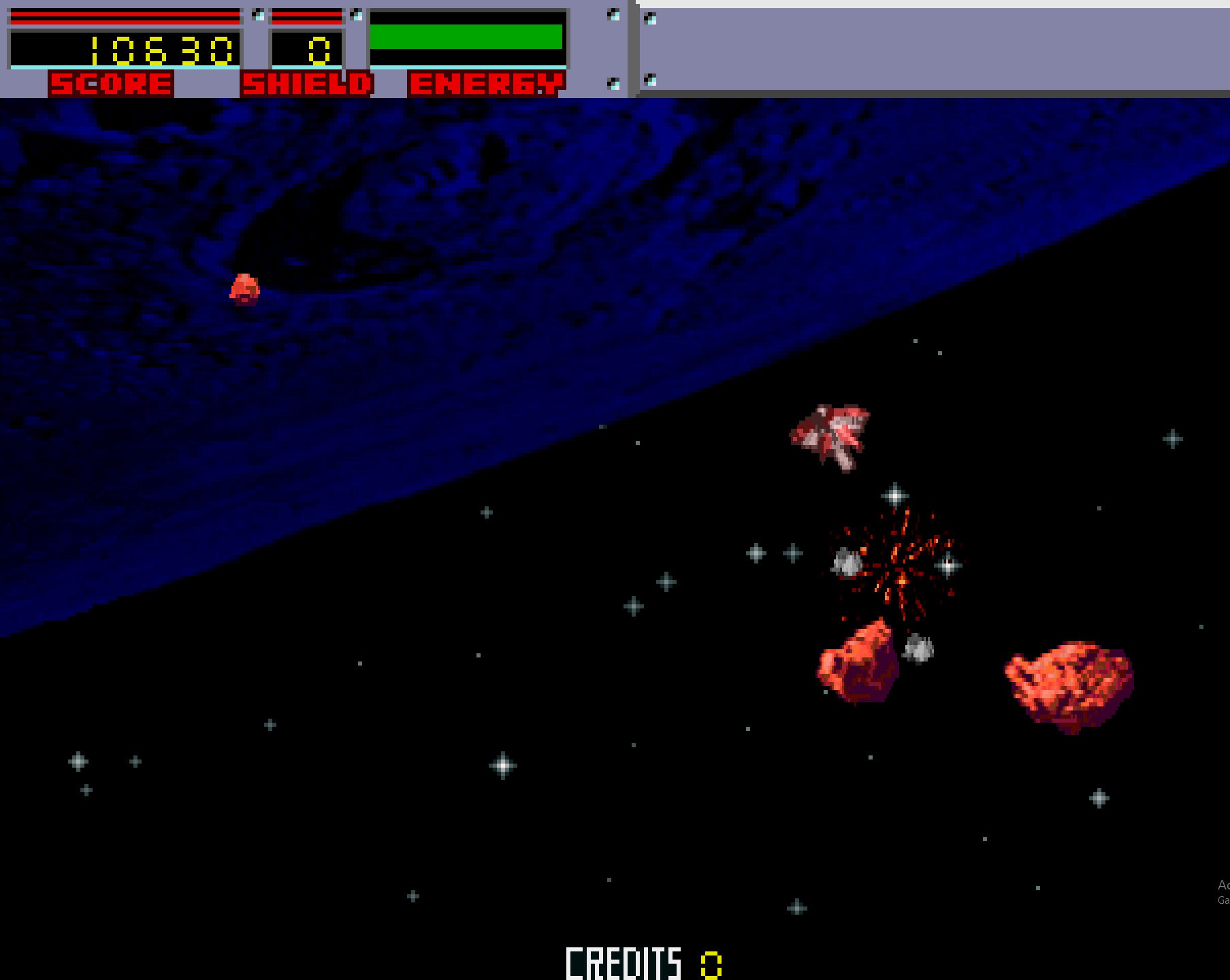
Legacy and Player Reception
Although Blasteroids didn’t achieve the monumental success of Asteroids, it was well-received for its updated mechanics and cooperative gameplay. It maintained Atari’s legacy as a pioneer in arcade innovation and demonstrated the potential of sequels to reinvigorate classic games.
Community Feedback:
- Players Appreciate: The more dynamic and colorful gameplay compared to the original Asteroids.
- Critics Note: Some players found the energy management system challenging, but it added a layer of strategy that many enjoyed.
Influence on Future Games: Blasteroids inspired future arcade games to incorporate power-ups, cooperative gameplay, and more complex ship mechanics, setting a precedent for innovative sequels.
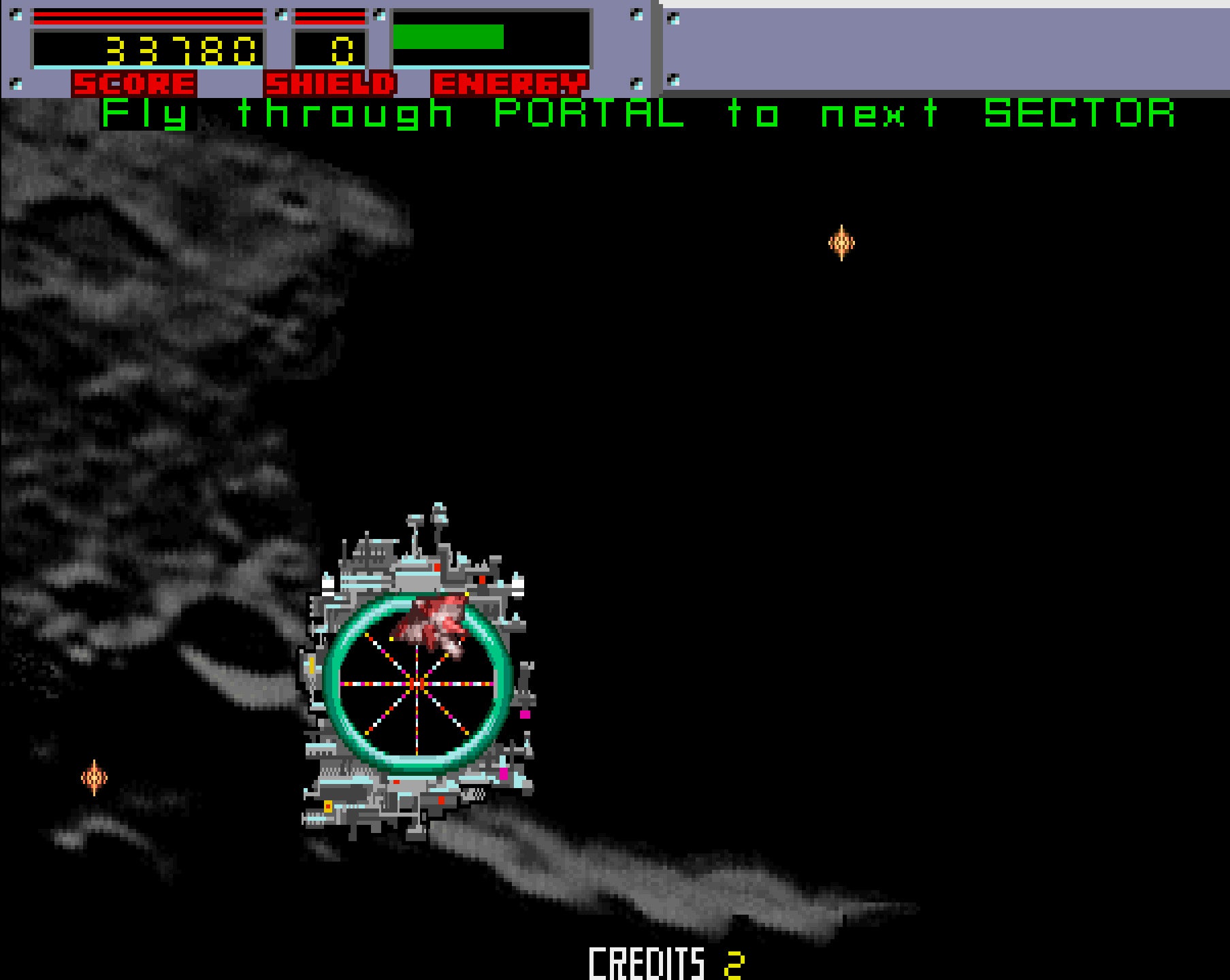
Fun Facts
- Voice Synthesis: Blasteroids featured voice synthesis, a novelty for arcade games at the time, adding to the game’s futuristic and immersive atmosphere.
- Design Evolution: The switch from vector to raster graphics highlighted the technological evolution that was occurring in arcade gaming during the late 1980s.
Conclusion
Blasteroids stands as a testament to Atari’s commitment to pushing the boundaries of what an arcade game could be. By building on the simple but addictive mechanics of Asteroids and adding strategic depth, enhanced visuals, and cooperative gameplay, Blasteroids carved out its place in arcade history. Whether you’re a fan of classic arcade games or looking to explore the evolution of early video game sequels, Blasteroids offers an exciting and challenging experience.
Related Pages
Questions you might have:
When was Blasteroids arcade game released?
"Blasteroids" was released by Atari Games in 1987 during the peak of the arcade gaming era. Its launch marked a continuation of the popular "Asteroids" franchise, offering a fresh take on space-themed gameplay.
Who developed Blasteroids arcade game?
Blasteroids was developed by Atari Games, a prominent player in the arcade gaming industry. The team behind the game included skilled designers like Eugene Jarvis and Sam Dicker, known for their contributions to innovative and engaging arcade titles.
What is the gameplay of Blasteroids arcade game?
In "Blasteroids," players pilot a spacecraft navigating hazardous asteroid fields while battling enemy ships. The gameplay is continuous, devoid of traditional levels, providing an unbroken stream of challenges. Cooperative multiplayer mode adds a social dimension, enhancing the experience.
Are there different ship types in Blasteroids arcade game?
Yes, players can choose from three different ship types in "Blasteroids," each with distinct attributes that influence gameplay. These options offer strategic depth, allowing players to tailor their approach to the challenges presented.
Does Blasteroids have levels like traditional arcade games?
No, "Blasteroids" diverges from the traditional level-based structure. Instead, it employs a seamless gameplay loop, offering an ongoing challenge as players navigate through dynamically generated asteroid fields and confront varied enemies.
What are the power-ups in Blasteroids arcade game?
"Blasteroids" incorporates power-ups that enhance players' capabilities. These power-ups include temporary weapon upgrades, shields for protection, and other bonuses that contribute to strategic gameplay and high-score pursuits.
Is Blasteroids a sequel to another arcade game?
Yes, "Blasteroids" serves as the sequel to the classic arcade game "Asteroids." Building upon the foundations set by its predecessor, "Blasteroids" introduced new gameplay mechanics, enhanced graphics, and cooperative multiplayer features.
How does multiplayer mode work in Blasteroids arcade game?
"Blasteroids" offers cooperative multiplayer gameplay, allowing two players to engage in simultaneous space battles. This mode encourages collaboration and coordination as players work together to navigate asteroid fields and fend off enemies.
Has Blasteroids arcade game been adapted for modern platforms?
While "Blasteroids" is rooted in the arcade era, it has been adapted for various platforms, including home consoles and emulated collections. These adaptations enable contemporary players to experience the game's nostalgic and challenging gameplay.

